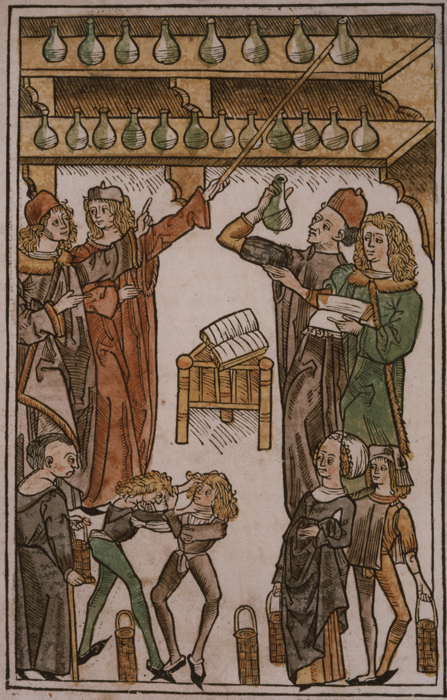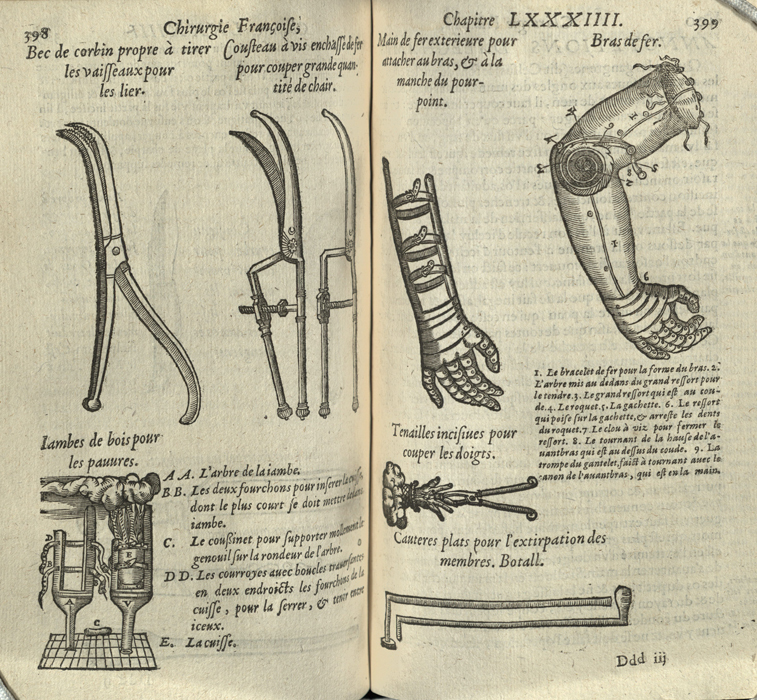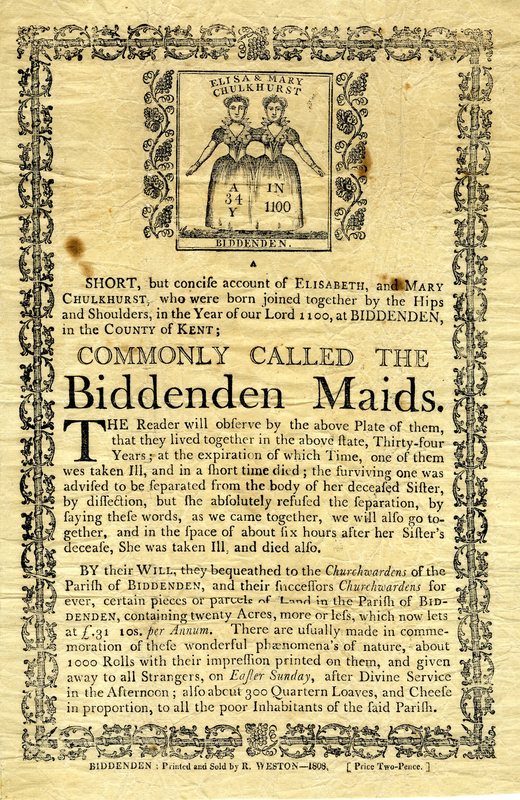Early Works
In 2005 and 2006, Mrs. Elizabeth M. Voli donated over forty medical works, many of them early Italian titles, to the rare book collection. The Voli gift includes three editions of La singolare dottrina and printings of the Hortus sanitatis from 1497 and 1536.
The Hortus sanitatis ["Garden of health"] is a compendium of plant and herb lore popular during the Middle Ages and Renaissance. This is the first Latin edition, and twenty others were printed in Latin before 1547, attesting to its popularity. In addition to botanical information, it contains tracts on fish, birds, and other animals; mining and gemstones; and a work on the analysis of urine.
For more incunabula, check out The Fifteeners.
The 16th century treatise, La singolare dottrina of Domenico Romoli of Florence, describes food and herbs, recipes, and diet for the use of the "scalco" or Renaissance house steward in Italy. This copy includes two plates of cooking apparatus which were later insertions, probably deriving from the 1607 edition of Vittorio Zonca's Novo teatro di machine et edificii per varie et secure operationi.
Principally a translation of the De chirurgia of Paul of Aegina, the Chirurgie françoise of Jacques Dalechamps incorporates information from other Classical writers as well as from Ambroise Paré, the foremost contemporary authority on surgical practice. Most of the illustrations used by Dalechamps are adapted from Paré's works. The illustrations here show treatments for arm and shoulder injuries.
Thought to be one of the earliest cases of surviving conjoined twins, the Chulkhurst sisters, known as the Biddenden maids, reputedly lived until 1134, although there is considerable uncertainty about the accuracy or even reality of their story. As early as the 17th century, a charitable bequest supposedly from the sisters guaranteed a distribution of bread, cheese, and beer to the deserving poor of Biddenden every Easter Sunday, and the tradition still continues as a tourist attraction.




